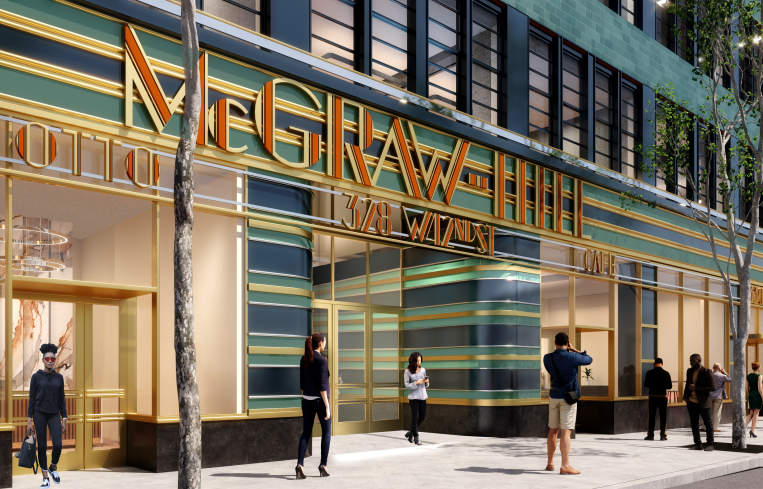McGraw-Hill Building’s Resi Conversion Speeds Up
By Celia Young March 13, 2023 4:15 pm
reprints
Resolution Real Estate just kicked the residential conversion of part of Midtown’s McGraw-Hill Building into high gear, one day after its lender was seized by regulators.
Resolution, which manages the historic 42nd Street building on behalf of ownership group Deco Tower Associates, plans to convert the 12th through 32nd floors of the tower into 224 apartments, add a residential lobby, provide amenities for renters on the 33rd and 34th floors and update the offices on the second through 11th floors by 2024, the New York Post first reported.
The news comes as the Federal Deposit Insurance Corporation takes control of Signature Bank, the lender of a $140 million performing loan on the 330 West 42nd Street building, as federal regulators try to contain the fallout from the failure of Silicon Valley Bank after its customers rushed to withdraw their deposits on Friday.
Signature started marketing the floating-rate debt in February as the bank reined in its real estate lending following a crash in the cryptocurrency markets, one of Signature’s significant investments, The Real Deal and the Wall Street Journal reported.
The bank’s demise will likely delay the loan sale, according to a source familiar with the deal. But Signature’s closure won’t impact the residential conversion, Gerard Nocera, a managing partner at Resolution, told Commercial Observer.
“We’ve been current on that loan, [we will] stay current on that loan,” Nocera said. “It’s at a very good rate in today’s world, so we’re happy with that and we plan to extend it.”
The loan, set to mature in 2024, has a blended rate of 6.59 percent and a default rate of 24 percent, CO previously reported.
Representatives for Signature and the U.S. Department of the Treasury, which announced the bank takeover Sunday, did not immediately respond to requests for comment.
The future of the 92-year-old McGraw-Hill Building has been buzzed about since 2021 when its owners announced they planned to convert the tower from a single-use office property into a multitenant office building, Architect’s Newspaper reported.
The decision to convert part of the building to residential use comes amid a broader push to repurpose older office properties to housing as the city faces an office glut and a dwelling shortage. The 35-story tower was a great fit for luxury apartments because of its design and location near public transportation, Nocera said.
Completed in 1931, the building served as headquarters of McGraw-Hill Companies until 1972, when the company moved to 1221 Avenue of the Americas. The gray-green building features a series of setbacks that create terraces at different floors, particularly its top floors.
“This is a famous building,” Nocera said in a statement. “You have a 360-[degree] band of windows around the building, our floorplates are the right size so the apartments are not too deep, and we are an as-of-right conversion, so [there was] a lot of red tape [that] we didn’t need to go through.”
Ownership scored approvals from the New York City Landmarks Preservation Commission to convert the building’s upper floors to studio, one-bedroom and two-bedroom units in February, according to a spokesperson from Resolution. There are also plans to restore the iconic “McGraw-Hill” sign above the tower’s residential entrance.
MdeAS Architects, known for its design of another office-to-residential swap at Harry Macklowe’s 1 Wall Street, will lead the conversion, with SLCE Architects designing the apartment layouts and Corcoran New Development leasing out the units.
Celia Young can be reached at cyoung@commercialobserver.com.


